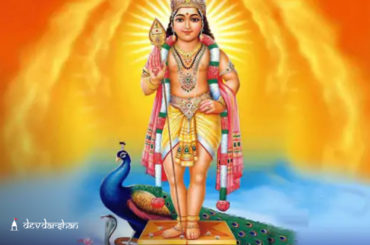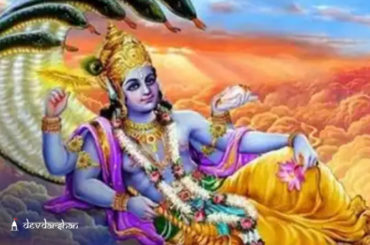India stands for its extraordinary destinations and grandeur and boasts numerous cultural heritage sites of exceptional significance, it is also a land of Vedas, culture, spirituality and Sanatan Dharam, where each festival speaks of its legacy, history and spirituality and Navratri is one such festival.
Navratri is the most vibrant and the longest festival of the sub-continent India. With a lot of temples situated in India pertaining to various Gods and Goddesses, Devoteess visit these pilgrimage centres during special festivals. So, let’s unveil the prominent temples you should consider visiting during the Navratri festival, where you can imbibe the potency, rejuvenation, and positivity it brings to your life.
India, a land celebrated for its rich tapestry of religions, social diversity, beliefs, and languages, is equally renowned for its architectural heritage and ancient landmarks. The act of devoutly offering prayers to deities with a pure heart is believed to be a means to fulfil one’s desires. This explains why people frequently embark on pilgrimages to various temples across the nation.
Navratri stands as one of the most popular and widely celebrated Hindu festivals. During this auspicious period, devotees engage in the Maa Durga Puja, offering heartfelt prayers to the goddess. Numerous temples become the focal point of devotees’ visits during the Navratri, enhancing the spiritual experience of this joyous occasion.
Vaishno Devi Temple
The Vaishno Devi Temple stands as one of the most frequented pilgrimage sites for Hindus and visitors from across the globe. Nestled within the Trikuta Mountain, in the town of Katra within the union territory of Jammu and Kashmir, Vaishno Devi symbolizes the essence of Goddess Saraswati, Goddess Mahakali, and Goddess Mahalakshmi. Paying a visit to this temple during the Navratri festival is an experience one should never forgo.
Kamakhya Temple
The Kamakhya Temple, located in Guwahati, Assam, is one of the 51 Shakti Peethas. It is the sacred site where the Yoni (reproductive organ) of Devi Sati fell after Lord Vishnu dismembered her earthly remains. Situated on the Ni hāl hills in the western region of the city, the Kamakhya Devi temple is among the most frequented temples in the country, especially during the Navratri festival.
Dakshineshwar Temple
The Dakshineshwar Temple is another revered destination among Hindus. In 1855, Rani Rashmoni, a devoted follower of Goddess Kali, commissioned the construction of this temple. Situated on the banks of the Hooghly River, near the city of Kolkata, the Dakshineshwar Temple houses an idol of Maa Bhavatarini, a manifestation of Goddess Kali. Visiting the temple during the Navratri festival is believed to be a way to seek the blessings of the Goddess.
Participate in Maa Durga Puja in Himachal Tirth Kshetra During Navratri
Kalighat Temple
During the Navratri festival, numerous devotees make their way to the Maha Kali Temple, situated in the Kalighat district near Kolkata. Legend has it that this is where the right toe of Devi Sati was discovered. What sets this temple apart is its unique depiction of the Goddess, with an extended, protruding tongue, symbolizing her fierce form.
Kolhapur Mahalakshmi Temple
Located in Kolhapur, one of Maharashtra’s most renowned cities, the Mahalakshmi Temple is dedicated to Goddess Ambabai. This temple, constructed during the Chalukya dynasty, is notable for its unique architectural features. It boasts a small aperture on the western wall, allowing sunlight to enter and illuminate the feet and chest of the deity twice a year. On January 31 and November 9, the sun’s rays shine upon the Goddess’s feet, while on February 1 and November 10, they illuminate her chest.
Meenakshi Temple
Situated on the banks of the Vaigai River in the historic city of Madurai, Tamil Nadu, the Meenakshi Amman Temple is dedicated to Goddess Parvati, also known as Maa Parvati. It stands as one of the most sacred places of worship for Mother Parvati’s devotees. The temple is particularly known for its idol of the goddess, where she is depicted holding a parrot in her right hand, and her sparkling diamond nose pin leaves worshippers captivated.
Want to Remove Fear of Unknown Enemies, Participate in Sarva Siddhi Durga Kavach Puja?
Chottanikkara Temple
This temple is dedicated to Goddess Lakshmi and is situated in a coastal suburb of Kochi, Kerala. The presiding deity here manifests in three distinct forms throughout the day – Mahasaraswati in the morning, Mahalakshmi in the afternoon, and Goddess Mahakali in the evening. It is believed that those suffering from mental illnesses find healing through their devotion to the divine presence here.
Ambaji Temple
Ambaji Temple is also one of the 51 Shakti Peethas and is located in the Banaskantha district of Gujarat. It is one of the most visited destinations in the country during Navratri. It is believed that the heart of Devi Sati fell at this sacred place. Notably, the temple does not house any idols or symbols; only the Yantra, a geometric representation of the Goddess, is worshipped here.
Naina Devi Temple
The Naina Devi Temple holds great prominence during the Navratri festival, and people visit it to seek the blessings of the deity. Situated in Himachal Pradesh, it is also known as Maheeshpeeth because it is believed that the Goddess killed the demon Mahishasura at this location.
Jwala Devi Temple
Located near the Kangra region of Himachal Pradesh, the Jwala Devi temple is dedicated to eternal fire. It is one of the 51 Shaktipeethas and is believed to be the place where the tongue of Devi Sati fell.
Sundari Temple
According to mythology, Lord Vishnu dismembered the body of Mata Sati into 51 pieces with his ‘Sudarshana Chakra,’ and these pieces fell at various locations across the country, known as ‘Shaktipeeths.’ One of these places is Matabari in the southwestern part of Udaipur, Rajasthan. The temple is often referred to as Kurma Pith due to its turtle-like appearance. The idol of ‘Maa Kali,’ the principal deity of the temple, is made of bronzed dark stone, locally known as ‘Kashtipathar.’
Participate in Maa Durga Puja in Ujjain Tirth Kshetra During Navratri
Mangala Gauri Temple
The Mangla Gauri temple, built in the 15th century, is highly revered in the region, with Goddess Mangla Gauri considered the deity of auspiciousness. It is also recognized as one of the 18 Maha Shaktipeeths, situated on the Manglagauri Hill. During Navratri, devotees visit the temple every Tuesday when it is adorned with decorations. Women pray here for their family’s well-being and their spouse’s recognition. The idol or image of the goddess is bathed in milk, curd, and water before being dressed in red cloth. Fruits, sweets, and ornaments are placed before the goddess before the rituals commence.
Maha Kali Devi Temple
The Maha Kali temple is situated in Ujjain and houses the idol of Hara Sidhi Mata. Although it is considered a Shaktipeetha by some, not everyone subscribes to this belief. The temple is associated with the legend of King Vikramaditya offering his head to the Goddess multiple times, with her restoring it each time. Goddess Mahakali is also known as Rakt Dantika or Chamnuda Maa and is credited with ending the existence of Andhakasur.
Chamundeshwari Temple
Located 13 km from Mysore, Karnataka, the Sri Chamundeshwari Temple stands atop one of the hills. ‘Chamundi’ or ‘Durga’ is the fierce form of ‘Maa Shakti.’ She is renowned for slaying Chanda, Munda, and Mahishasura, the buffalo-headed demon. She serves as the clan deity of the Mysore Maharajas and is the presiding goddess of Mysore.
These temples, a cherished pilgrimage for many during Navratri, stand as beacons of divine grace. When you embark on a journey to one of these sacred sites during this auspicious period, the Goddess herself may bestow upon you the blessings for a life filled with positivity and abundance. Navratri, in the eyes of many, is the supreme moment to honour and connect with the Goddess.




